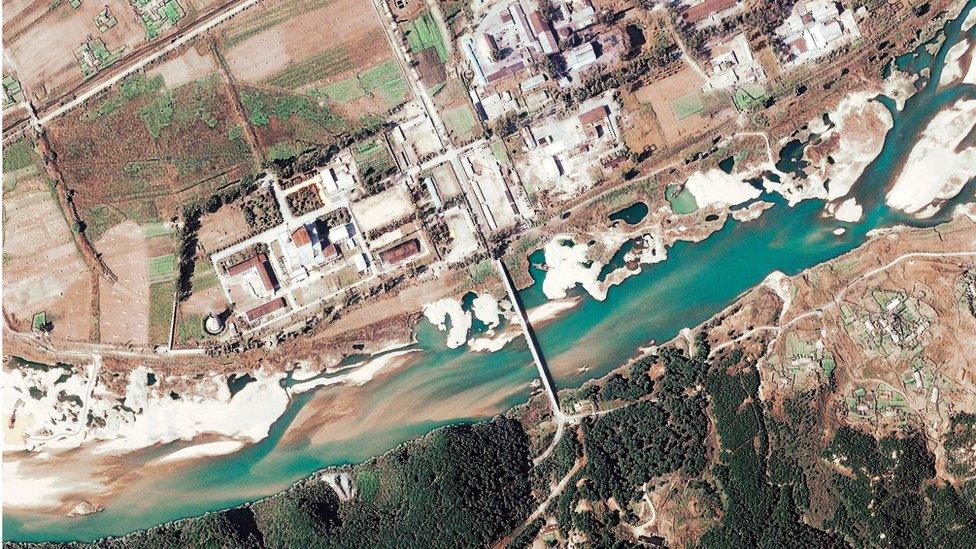North Koreans celebrate leader amid tensions
- Published
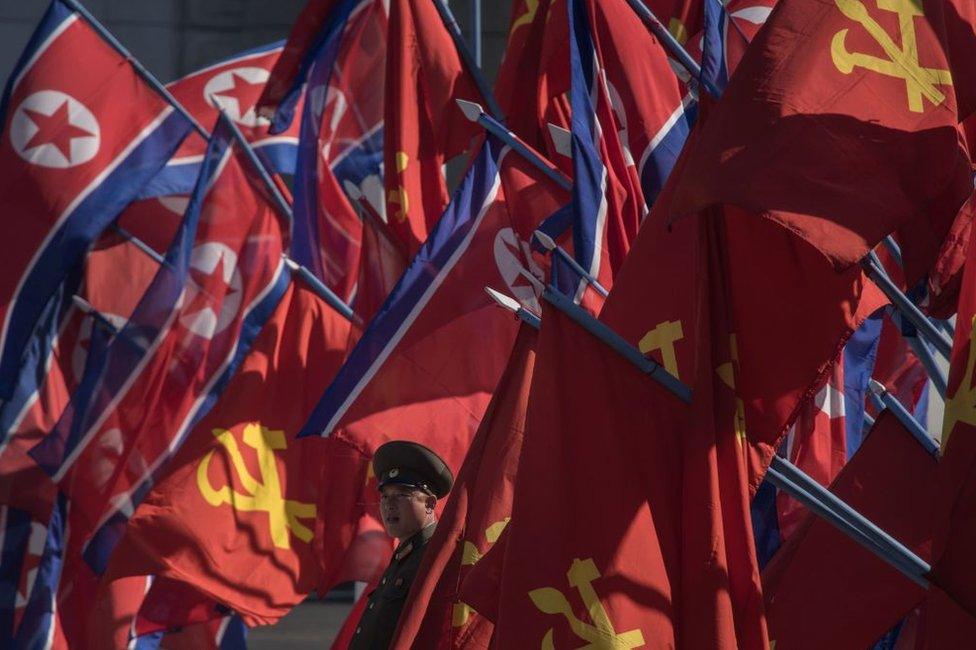
The North Korean capital is gearing up for celebrations
This week Pyongyang is a city in a frenzy of preparation.
At times the crowds of people thronging the sidewalks have turned the streets into a blaze of colour - the women, vivid explosions of rainbow hues in their traditional Korean dresses, and the men, although black or grey suited, carrying large artificial pink and red flowers.
These plastic, pom-pom like azaleas are used for waving in the ritualised adulation of their leader for which they are now so busy rehearsing.
Some sit in large groups waiting for instructions, others walk purposefully to or from the parade ground, chatting or laughing together along the streets of a capital city that is still largely devoid of traffic.
Antiquated army trucks with open tops trundle into town, in convoys dozens long, each packed with soldiers in uniform.
There's a relaxed, holiday feel: the female conscripts, separated in their own trucks, smiling and waving at passers-by, the male troops singing merrily in unison.
It gives this city the air of a giant film set for a war-time period costume drama.
But in the world's last truly totalitarian state, this is the reality.
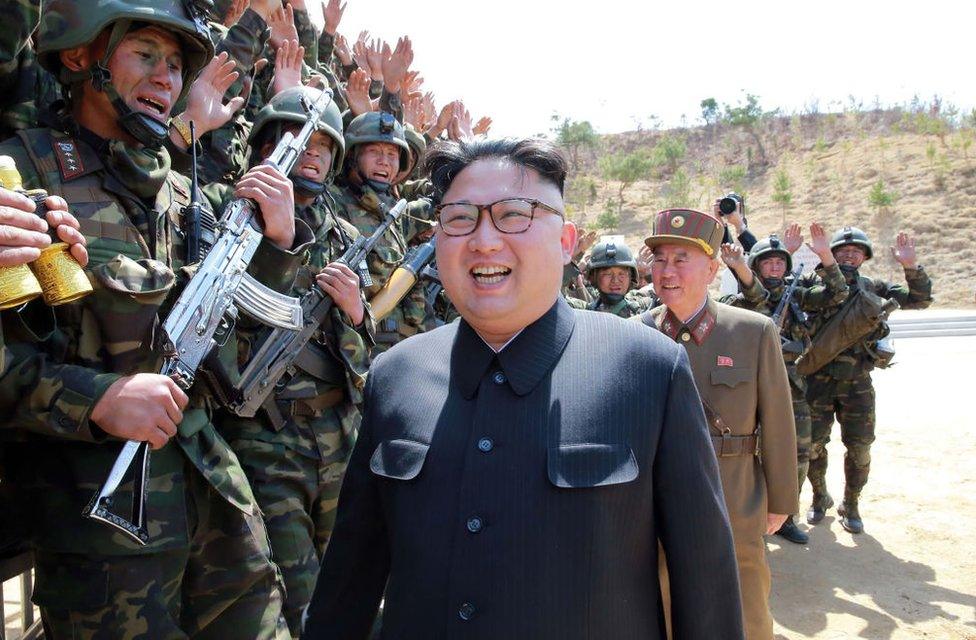
State media released pictures this week showing North Korean leader Kim Jong-un inspecting troops
Mass mobilisation is the defining essence of social and political life and there is no more important occasion for the expression of absolute fealty to the leader than The Day of the Sun.
Saturday marks the 105th anniversary of the birth of North Korea's long-dead founding president Kim Il-sung, although according to the country's constitution he remains formally in office.
The celebrations this year have taken on an added sense of symbolic meaning as they take place amid one of the periodic peaks in the tension that has so often defined the country's relationship with the outside world.
People on the Pyongyang subway reveal how they feel about the country's nuclear tests
This isolated regime has shown a skilful knack of posting itself into the priority inbox of every US president who has come to office in recent years.
This time is no different, with an underground nuclear test shortly before the election, followed by a flurry of ballistic missile tests during the first few weeks of Mr Trump's presidency.
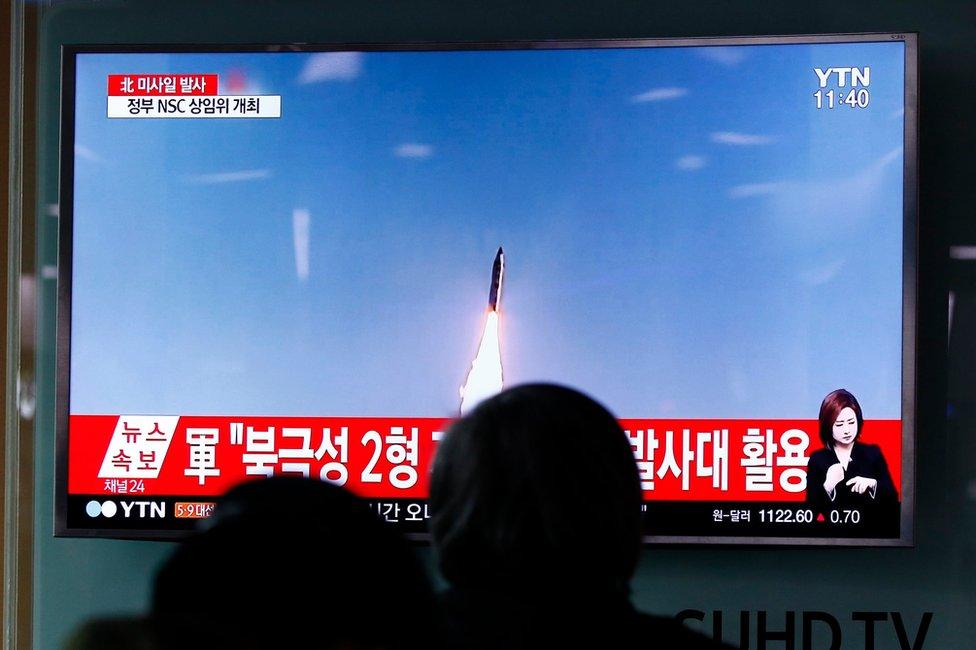
North Korea launched a missile into the Sea of Japan last week, according to South Korean reports
And like other presidents before him, Mr Trump appears to be exploring whether - instead of the failed diplomacy, debate and delay - a more direct, dramatic option might be available.
Whether he will, like others, finish his term having eventually decided that there is no realistic alternative remains to be seen.
Military deterrence
But the fact that no US administration has yet been able to find a way to rein in North Korea's nuclear ambitions is a measure of the remarkable success of its game of brinkmanship with the outside world.
It is a classic study in military deterrence.
The regime's most powerful weapon has long been its conventional artillery.
Placed close to the border, it could cause significant damage and large loss of life in the South Korean capital within a matter of minutes.
Read more:
For the government in Seoul it makes not just any offensive military option unthinkable, but complicates even defensive calculation.
In 2010, following an audacious and unprovoked torpedo attack on the South Korean warship the Cheonan - claiming the lives of 46 sailors and widely believed by the international community to have been carried out by the North - the South sat on its hands.
A few months later there was also no retaliation when North Korea shelled a South Korean island, hitting both military and civilian targets.
It is proof that the North has calculated all too well the costs of military engagement for its democratic, populous and economically vibrant neighbour.
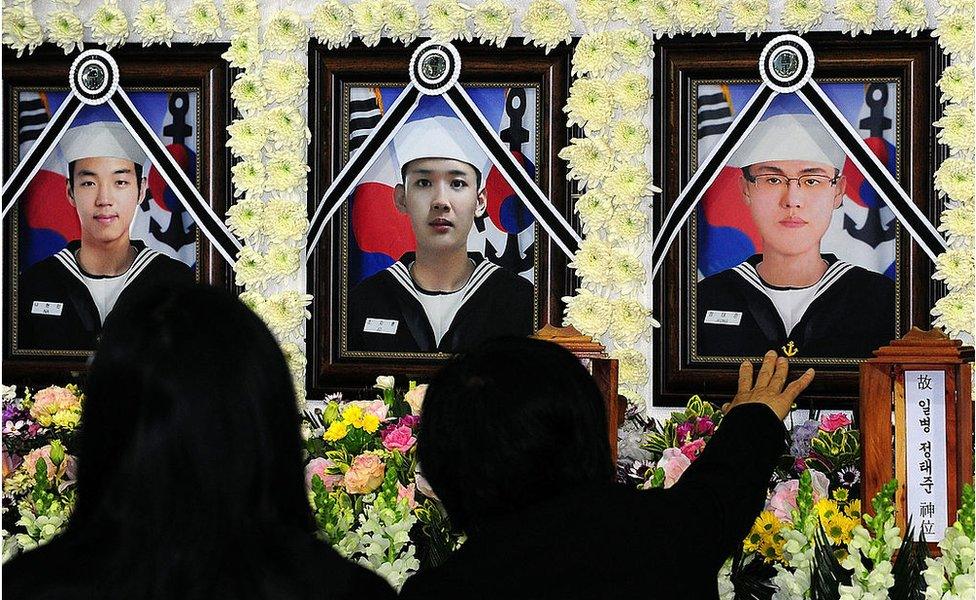
The attack on the South Korean naval vessel Cheonan killed 46 South Korean sailors
Employing exactly the same logic, Pyongyang has been edging ever closer to possessing a deliverable nuclear arsenal with the aim of forcing its foes further afield into the same strategic bind.
The one thing that keeps the North Korean leadership awake at night is the thought of the B52 bombers stationed on the Pacific island of Guam.
And they have learned a very particular lesson from the US-led efforts to bring about regime change elsewhere in the world.
Iraq didn't have nuclear weapons and Libya had given its up.
Two stark choices
Unless North Korea can be given the kind of guarantees that would make it feel secure enough - which seems unlikely in the short term - then any effort to negotiate away its nuclear programme is bound to fail.
So for now, the world is left with two stark choices.

Women dressed in traditional outfits attended the opening ceremony of a housing development on Thursday
Accept North Korea as a member of the nuclear-armed club, or try to force it to disarm, either through ever tougher sanctions or the incalculably risky option of military action.
As President Trump weighs these options, North Koreans are preparing to march, dance and sing to the glory of the country's ruling family this weekend.
And there is speculation that another nuclear test could be a matter of just days away.
- Published13 April 2017
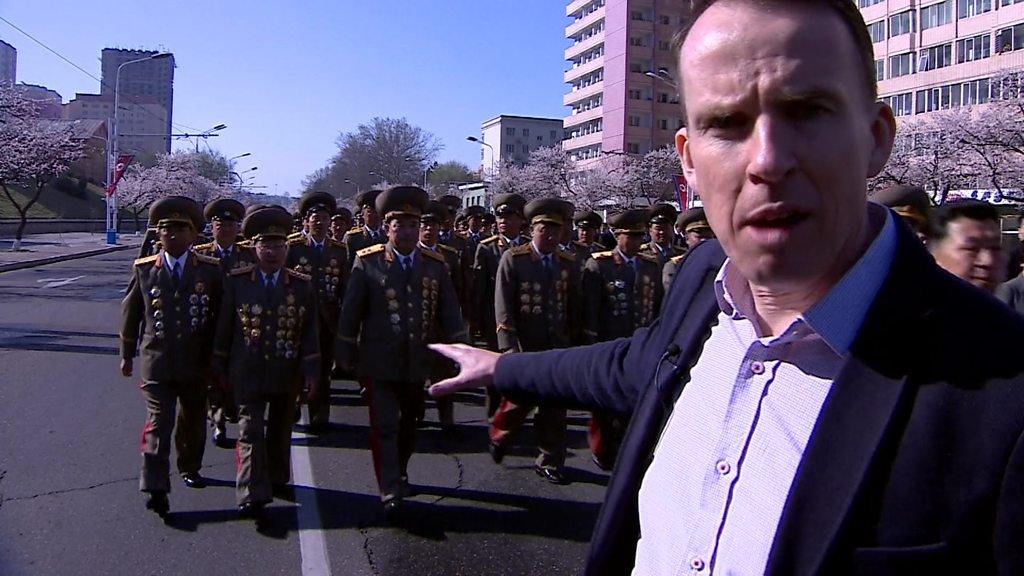
- Published19 July 2023
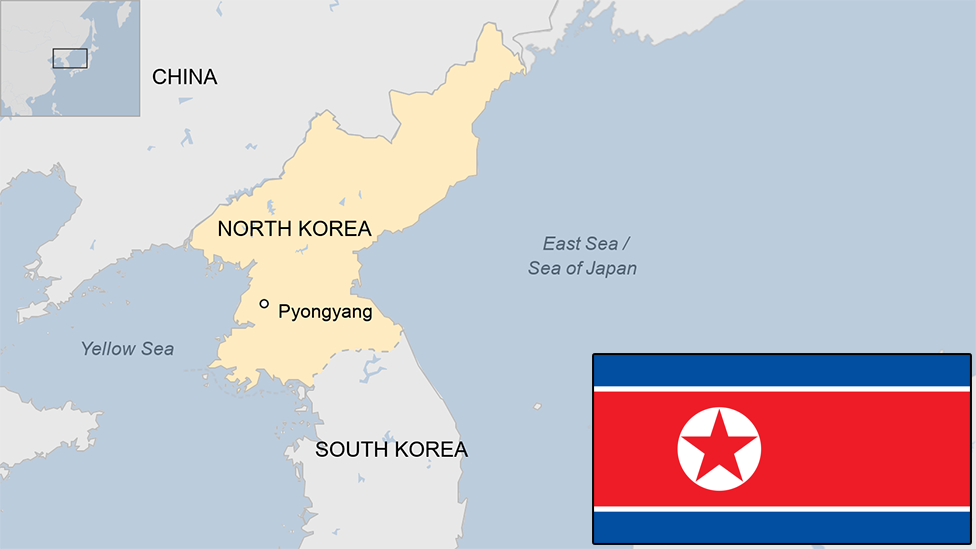
- Published10 August 2017
